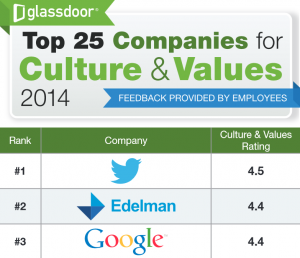Take a look around in virtually any magazine, newspaper, trade publication, or website and you are bound to find numerous articles about Twitter, like this one here on Corporate Eye about creating value on Twitter. Publications and webpages with a technical audience (and authorship) are likely to proclaim Twitter as the future of all communications, and issue grave warnings that you are already falling behind in this critical new universe. Those resources dedicated to marketing and public relations may be less effusive, but are also likely to be completely on board with all things social media, including Twitter.
On the other hand, media with a legal or regulatory focus are more likely to sternly advise you of the inevitable lawsuits that will plague your company if you even think about Twitter in the wrong way. Mainstream investing publications seem to split the difference, calling on readers to aggressively use and promote a corporate Twitter account, while at the same repeatedly cautioning investment professionals to mind the possibility of violating securities related rules or regulations.
Twitter’s IR Conflict
The difficulty surrounding using Twitter or other social media, sometimes referred to as social marketing, stems from multiple factors. All too often, these intertwined concepts are glossed over, or simply ignored. Unfortunately, in business, ignorance is almost never bliss.
In this multipart series, we’ll take an in-depth look at Twitter and other social media websites like Facebook and see just what they have to offer top-level Investor Relations departments, and what perils the same sites may expose your company and your IR department to. Most importantly, we’ll look behind the opinions and statements and reveal the intricate play between the numerous factors that go into making Twitter such a challenging proposition for even the best prepared IR teams.
Social Networking Basics Guide
Although Twitter seems to attract the most attention these days among those in the Investor Relations realm, it is far from the only social networking site. Twitter was launched in 2006, by then, sites such as MySpace, LinkedIn, and Facebook had been popular for years.
The most common resistance to social networking sites from non-users is that they can do the same thing via phone or email. While both provide the means to communicate with others, they require a continuous selection of who to include on each communication. Additionally, in order to keep certain communication separate from others, many people have multiple email accounts that they check with varying frequency.
Further, it is common to forget just who has and had not been included in previous communications, opening the possibility that people you intended to communicate with were, in fact, not contacted. Thus, the potential for accidental exclusion in any broad conversation is higher. The author actually did not let a favorite aunt (nor more than one client) know when his son was born because he thought the email lists he used had covered everyone while excluding those who would not be interested.
Email,then is best suited for either small or static, homogeneous groups, such as members of a team.
Social networking sites, by contrast, are a way for self-defined collection of individuals to communicate in an open manner. Unlike email which requires the sender choosing to specifically include you on each email, social networking sites provide for anyone who has been previously included to take part in all exchanges. As an added bonus, unlike email, social networking messages need not commingle with other communications because messages can be read online instead of through an inbox.
What Is Twitter? Twitter Explained
Not long ago, whether or not you knew about Twitter was largely defined by your age. Twitter was originally conceived as a way to send short “status updates” to your friends. “Short” was set at 140 characters in large part because this amount would be an acceptable size for a SMS message, more commonly known as a text message, on any US wireless network.
In the early days, Twitter was used primarily by teenagers and twenty-somethings to find out what their friends were literally doing. With Twitter, your friend Dave could tell you what club he was planning on going to. Then, when that location turned out to be lame, Dave could update his status to let everyone know he was moving on to the next location. When he got somewhere he was happy with, he could report that too. Using this information, Dave’s friends didn’t have to worry about showing up at the wrong location and Dave and his friends didn’t have to make dozens of annoying cell phone calls just to find out what everyone else was doing.
Other users found Twitter a refreshing way to text their friends faster and easier than by typing on their cell phones. It was during this initial phase that Twitter earned its reputation as nothing more than a place where you tell other people what you had for dinner and read about what other people had for dinner.
Today, nobody posts an update about what they ate for dinner.
 Real Friends and Twitter Friends
Real Friends and Twitter Friends
One of the difficulties many first time users find with Twitter is the concept of friends. In the real world, friends is a select group of people. Depending on your demographic, it is possible that many of your friends do not have Twitter accounts. As such, you would have only a few friends to follow and only a few friends to follow you. This makes Twitter virtually worthless since other methods are a more efficient way of communicating with small numbers of users.
This may explain why Twitter caught on faster with younger people who are more likely to form and disband ad hoc groups at different times for various events. Consider a single person who begins their weekend as part of a group of ten, all attending the same concert; that becomes a group of fifty people, some the same and some different than the original ten, at a party after the concert, which then morphs into a group of 15 avid bicyclists planning a Sunday afternoon ride.
For this type of situation, the number of friends is significantly higher than the traditional definition and includes not just person friends, but also members of the same groups, both formal and informal. Another cyclist, for example, with no interest in the concert, party, or breakfast, can still stay connected about where to show up.
Investor Relations and Investing Friends?
How, then, can such a concept grow to include Investor Relations? Certainly, IR cannot consider everyone who requests an annual report to be a friend.
Therein lies the possibilities of Twitter. Thanks to its broadcast nature, comments, suggestions, and even the bane of email-based communication, jokes, can all be “sent” in a way that they can be seen and read by “everyone” without being perceived as junk communication.
Indeed, in a real way, Twitter is the “Send to All” button. However, where sending a message to everyone in an email is reviled as spam, Twitter, is the ultimate opt-in campaign.
Ready to get started right now?
Hold on. The devil, as they say, is in the details.
Watch for the next article in our series, or just grab the Investor Relations RSS feed and let it come to you.
Lucy is Editor at Corporate Eye

